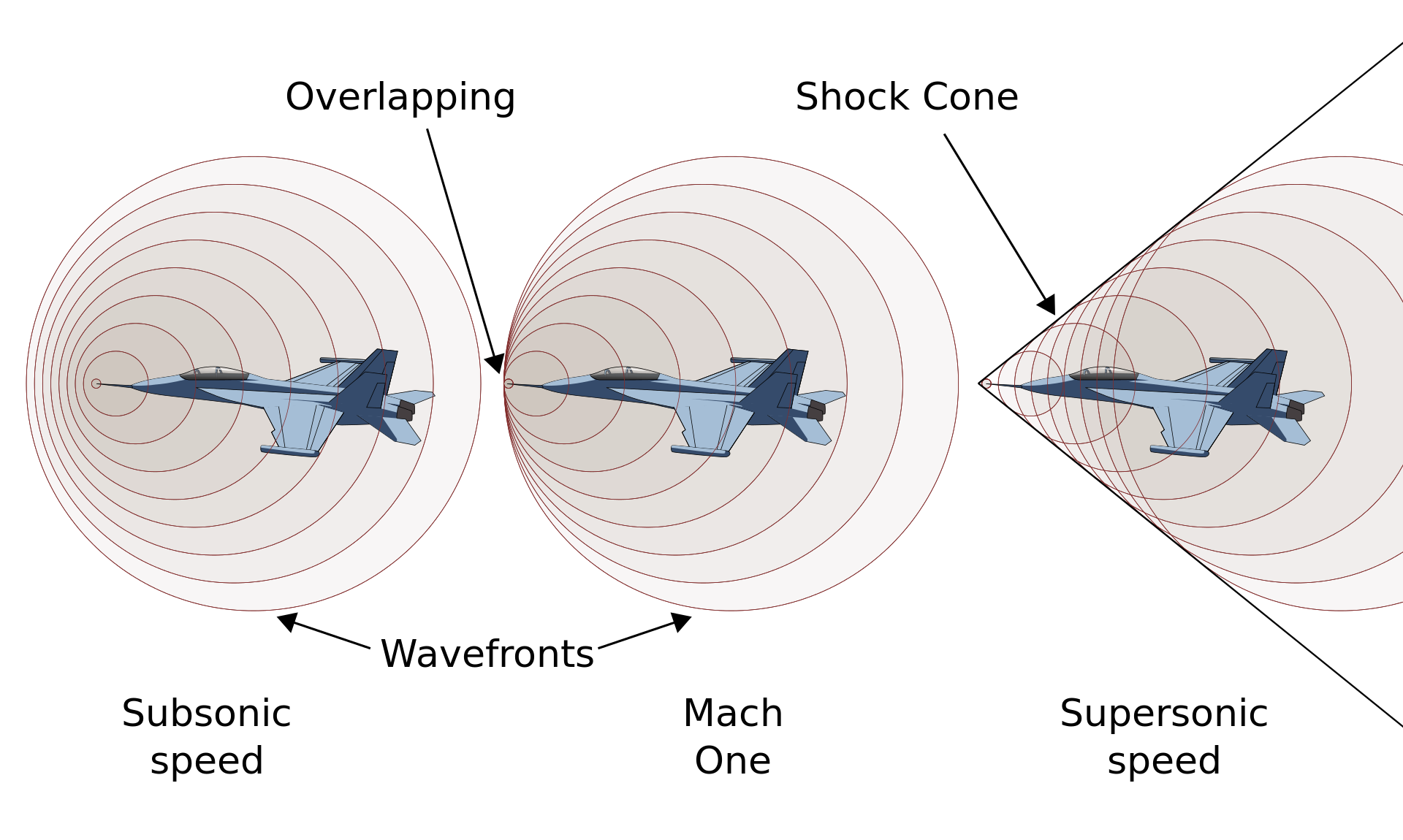Hmmm, that’s pretty amazing, how perpendicular the shock waves emanate from the front of the aircraft. I wonder at what speed they propagate, the speed of sound? Looks like it would have to be much faster due to the slight angle of the bow wave.The shock waves build up as the vehicle approaches speed of sound, (Mach 1) then compress closer together at the speed of sound. Once Mach 1 is exceeded the shock waves start angling rearward. The faster the speed, the sharper the shock wave.

Here's one of my favorite pics of Thrust SSC breaking the sound barrier. The lighter portion aft of the shock wave is the dust it's kicking up as the car passes over the ground.

Look at the shock wave in your diagram. It's at a 45 degree angle at Mach 1, which is what it should be - sound waves traveling 1 for 1 from its source at Mach 1 (i.e., 45 degree angle).
Again in your diagram, "The faster the speed, the sharper the shock wave." - agree.
But in the image posted by the OP, the waves are at least 80 degrees perpendicular to the aircraft! So what's up with the NASA image of two aircraft flying faster than the speed of sound?
The images feature two T-38s from the US Air Force, flying at supersonic speeds less than nine metres (30 feet) apart, with a stream of shockwaves emanating from either side.

I would like to see a zoomed out version of the NASA image. Perhaps then one could better see the curvature of the wave front.
Even so, there is "sumpin" odd about the speed at which the wave must propagate (i.e., faster than the speed of sound) to have such a perpendicular departure from something that is itself traveling at sonic velocities.
Here's one of my favorite pics of Thrust SSC breaking the sound barrier. Yep, that's a great picture, and it illustrates what I'm seeing even better. The shock-wave has to be traveling faster than sound for it to have such a perpendicular departure? No/little curvature in your pic either.


